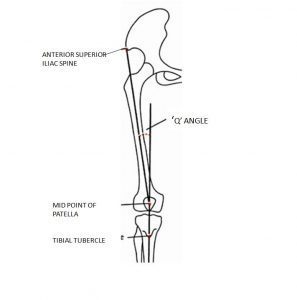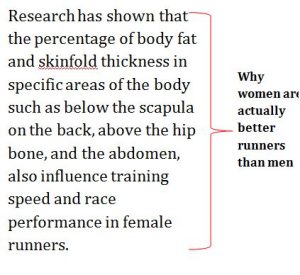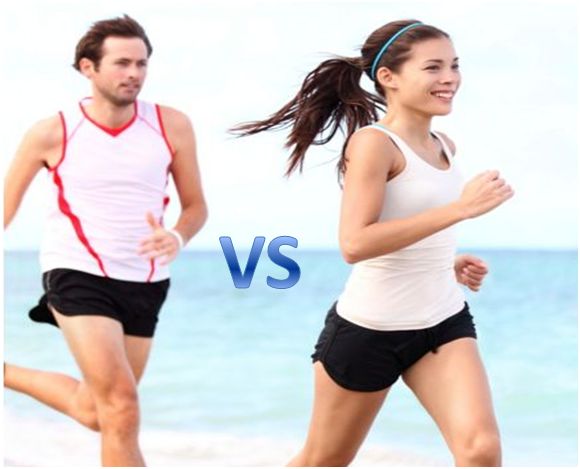Understanding the differences between men and women in long distance running
It’s a fact. Men and women simply have different morphology. Most runners will have a training plan to clock in the distance in order to achieve their goal of be it a 5km or an ultra marathon. While we are determined to cross the finish line with our personal best time, it would help to get to know your body better so you can reach the maximum potential of your given anatomy. In order to optimise your training and improve your performance, I’ve compiled a few differences that will create a better understanding of the differences between men and women.
Physiological gender differences & implications for training and performance
Before boys and girls hit puberty, their body structures are similar in terms of body weight, height, length of their legs and upper-arm circumference. During puberty, development occurs and boys will start to develop larger shoulders while girls start to develop larger and wider hips. Due to the smaller shoulder size of women, this poses a disadvantage for women to develop upper-body strength, limiting their body strength on the upper-body in comparison to men throughout adulthood. Women’s narrow shoulders compared to men’sare also generally shorter and women are naturally born with larger pelvis width-to-height ratio and shoulder-to-hip ratio than men.
“We some times hear the term pear-shaped being used to describe a woman’s shape, but the basic truth thata woman has wider hipsis specifically for the purpose of child bearing. Notice that most professional female runners tend to have smaller and narrower hips, so it’s their natural born physique that also aids them towards excelling in distance running”.
The Q Angle (or Quadriceps Angle)
The anatomical and biomechanical features are disparate between men and women. Women have a larger pelvis because they are designed to carry the child. This larger pelvis combined to a shorter femur lead to a different Q angle at which the quadriceps muscle – from the pointiest position of the pelvis, scientifically known as the Anterior Superior Iliac Spine – meets the kneecap (or patella), compared to the line connecting the ligament attaching the patella to the shin. The angle between these two lines forms the Q angle.
Males have a Q angle between 8 and 15 degrees while females have a Q angle between 12 and 19 degrees.
 SOURCE:PHYSIOPEDIA,Q ANGLE
SOURCE:PHYSIOPEDIA,Q ANGLE
How does this difference influence the running?
Women, as they have a broader angle, are more subjected to Anterior Cruciate Ligament (ACL) injuries while exerting themselves. The Q-angle dissimilarity refers to a difference of knee alignment as well. In short, men are anatomically better designed than women for running. The space for ACL movement is more limited by women than in men, putting the ACL in a critical position as it can easily get pinched and lead to rupture of the ligament, especially while stretching or twisting. However, when you practise how to train properly, you will lower the risks of getting injuredmale or female.
In summary,
- A larger Q-angle puts women at a mechanical disadvantage when running.
- Wider hips and a large Q-angle put the femur at an angle when the foot is on the ground.
- Elite female runnershave narrower hips, which closely resemble male runners. Research has also shown that the hip width of very good female runners is similar to that of both athletic and even non-athletic males.
|
Differences in body weight and body composition

Muscular differences
Muscle mass is on average 35% of the total mass of a man against 28% in women. Moreover, women have more “fat” than men. The fat of a woman averaged 20% against 13% in a man.
- Women have a smaller muscle than men
- Women can’t produce much muscle as much as men
- Men are able to sprint faster than women
Knowing that muscle activity is the cause of energy expenditure during exercise, and the woman has less ability to produce energy and therefore less strength and endurance.
Cardio muscular distinctions
The heart
The heart is a cardio muscular muscle that enables oxygen through blood stream to be pumped to your muscles.The female heart is smaller. While it weighs 118 grams on average in women, men’s hearts weighin at about 178 grams on average. Training improves the heart skills in both women and men. This enhancement is however limited in women.
Maximum Heart Rate is the maximum number of beats the heart can achieve in the space of a minute. This value is unique to each individual and it also changes with age and gender.
The Maximum Heart Rate is thus higher in women than in men. On average, a woman will reach 174 beats per minute against 169 beats per minute. Women’s hearts beat faster because the volume of blood ejected by the heart is lower than men’s.
However, a smaller heart doesn’t mean men are better at running marathon. Even though you first impressions turn into men’s advantages, women are still in the run!
VO2max: maximal oxygen consumption
Femaleshave less blood than males. This could be explained first by the period women experience every month, but that isn’t the only factor. The blood plays an important role while running. Indeed, the vital oxygen you need to make your muscles work is transported through blood.
VO2max is the maximum capacity to store, transport and use oxygen during aerobic exercise. In other words, this is the maximum volume of oxygen consumed during exercise. Your muscles and oxygen are necessary to produce the required energy for training. The more your VO2 max is, the more your body is able to use oxygen to produce energy.
The VO2max on average for male is45-50 ml/min/kg and 35-40 ml /min/kg for women.
Men have an average of 13.6 to 17.5 grams of haemoglobin per decalitre in their blood. Women have 12.0 to 15.5 grams per decalitre.
Women therefore have less capacity to store and transport oxygen, a difference that translates both during tests of strength or resistance during endurance events.
A more advantageous metabolism in women
Carbohydrate (or glucose) is stored as glycogen in the muscles and liver. These stores represent the prime source of energy but they are limited. Indeed, the muscles can store about 400 grams of glycogen and the liver 100 grams.
After running out of this energy, a runners’bodywill seek another source of energy through the fat. You store fat all over your body, especially beneath the skin and around internal organs. An important note is that proteins are generally not used as the main resource of energy, except in extreme circumstances.
Men will use glycogen as the energy used while running whereas women can easily usefat and less carbohydrate at a given intensity of exercise. Men will need to recharge their hydrocarbon stocks to fuel their running capacity. It takes about 30 minutes to hydrocarbon/sugar to reach your bloodstream.
As a conclusion, women need to approach their training and racing differently than men to optimise their unique characteristics.
More than that, hormones in both males and females differ in amounts and in the effect that they have in the body. Indeed, for women, the best time to run is during the Follicular Phase, which is during your sixth to 15th day after your period. The differences occur in muscles and metabolism as well.
Being aware of these differences means is also a way to realise that your needs are different, that is why tailoring your diet and your training is necessary.
Women, you may be physiologically weaker, but you are still champions J
Alissa Laurent, a Canadian runnerwon the Canadian Death Race in 2015 and ended 90 minutes before the second winner, a man.
In short, women are scientifically better distance runners than men. So go ahead and with safe and consistent training, you can outrun the boys!
References:
Physiological
Heart, blood, arteries
Energy
http://www.runningforfitness.org/book/chapter-7-eating-drinking-and-running/energy-while-running
https://runnersconnect.net/running-training-articles/cience-of-bonking-and-glycogen-depletion/
Q-angle
http://www.physio-pedia.com/’Q’_Angle#Recent_Related_Research_.28from_Pubmed.29
https://casi-acms.com/index.php/en/q-angle-explained
Muscle and VO2 max
http://www.ilosport.fr/articles/hommes-et-femmes-quelles-differences-de-performa/
First published on 3 May 2017, rehashed and refreshed.




评论已关闭。